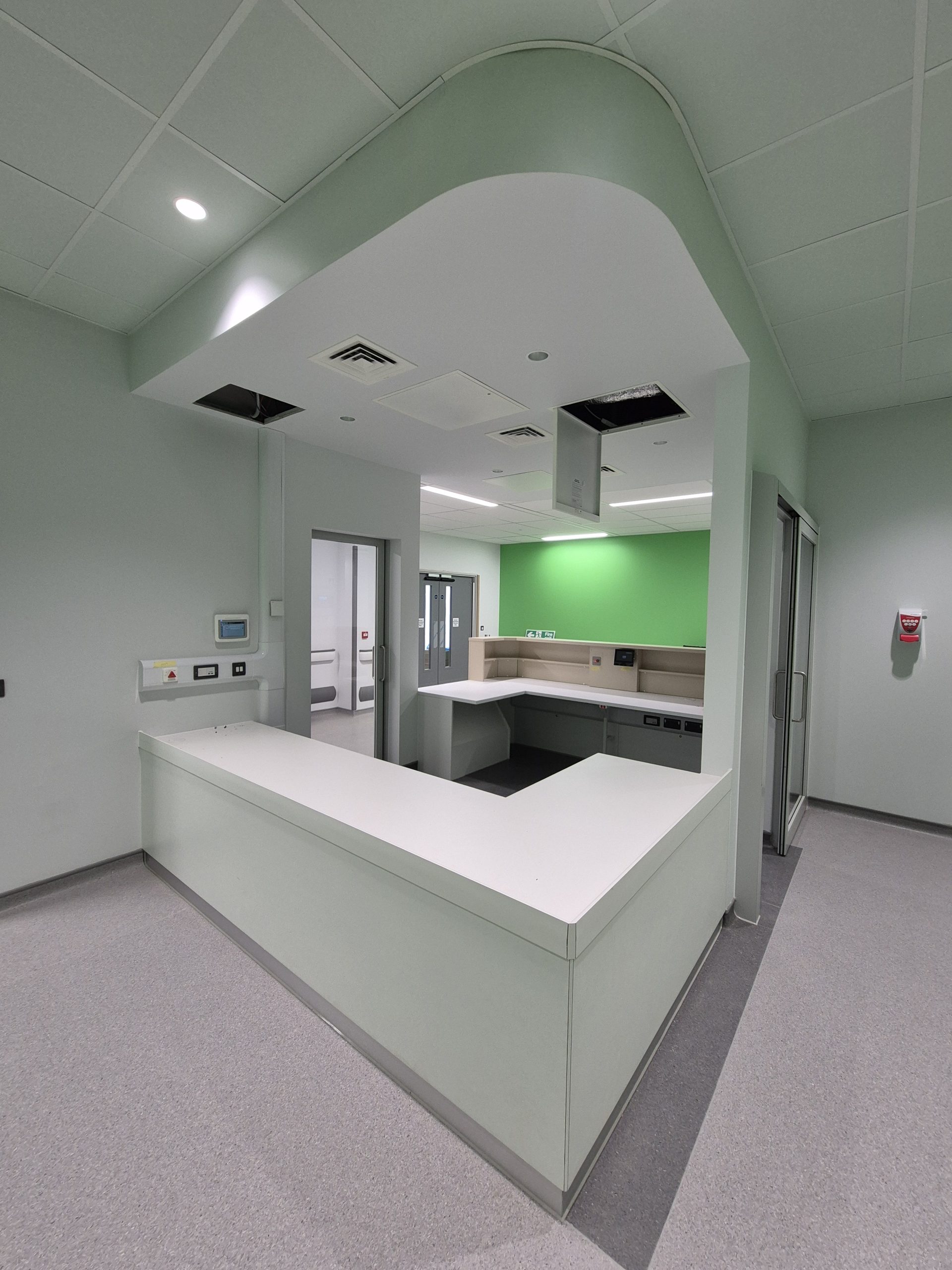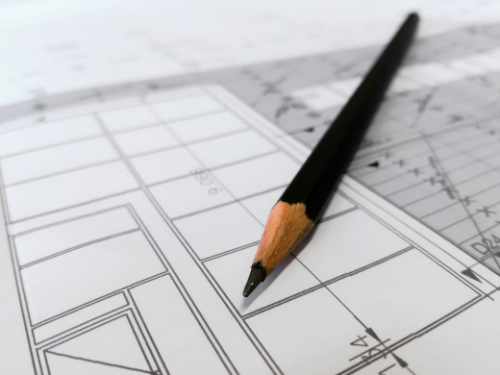Inside the main entrance of a busy NHS hospital is the reception desk. It stands…

Common mistakes architects make when designing healthcare facilities
When designing a hospital or healthcare environment, there are many important factors to consider, from patient comfort to furniture practicality. As such, it can be easy for construction companies and architects to miss important details that compromise the long-term functionality and quality of the healthcare environment. Below we outline common mistakes architects make and how to avoid them when designing a hospital or healthcare establishment.
1. Lack of wheelchair accessible furniture
Designers will often focus on the wheelchair accessibility of entrances into a room or building, but fail to consider how accessible fitted hospital furniture is for individuals who require the use of a wheelchair. The DDA (Disability Discrimination Act) states that in order to be compliant with the British Standard BS8300, the physical features of a premises must be more inclusive for individuals with disabilities. Therefore, furniture like reception desks must be accessible in a wheelchair, not only to be compliant with British Standards but to make patients feel more comfortable in your healthcare environment.
2. The use of clinical colours
In the past, healthcare environments have always been associated with dull colours, as establishments aimed for a bland, clinical appearance. Many designers mistakenly opt for shades of beige and grey, thinking they are inoffensive choices when warm tones and bright colours can be used to create a more welcoming and stimulating environment for patients.
3. Lack of infection control
Infection control, also referred to as infection prevention and control, is a practice that ensures infections are not able to spread around a hospital to staff or other patients. Establishing and maintaining good infection control should be one of the main priorities of any healthcare environment. For example, furniture with broken joints that are not secure can collect bacteria, dust and other harmful substances, helping to spread infections. Similarly, surfaces that cannot be easily cleaned or that collect dust can aid in the spread of infections and diseases.
By following the above information and choosing to work with a reputable British furniture manufacturer, you can create a healthcare environment that is both aesthetically pleasing and incredibly functional for patients and staff.
Common mistakes architects make – where to find out more
Read more and download brochures for our HTM 63 and HTM 71 compliant furniture ranges.
Read a short case study about the fitted furniture contract we delivered for Cardigan Health Centre’s brand new facility, combining community hospital, GP surgeries and dental facilities.
If you’re specifying health centre furniture or if you’d like to discuss a healthcare or hospital project, please get in touch.
As one of the UK’s leading manufacturers of fitted furniture for hospitals and healthcare facilities, we can design, manufacture and install furniture to meet your individual project requirements. Our Healthcare furniture range is specified for all types of hospital refurbishment and new development projects, from NHS Trust premises to private hospitals. All our furniture is manufactured at our factory in Broadstairs, Kent, here in the UK.
Image: ROEN CLINIC Interior Shot by RonanPark licensed under Creative Commons 4.0








